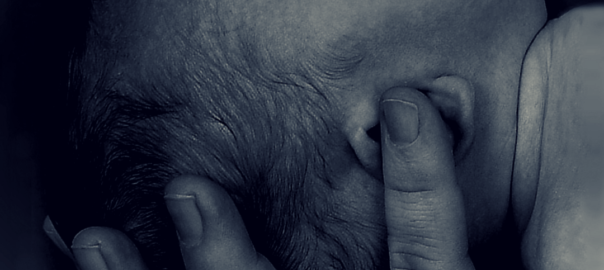Happy Monday Tribe!
Last week we talked about how the nervous system can trick us in various ways through motor and sensory deficits. If you missed it, make sure you catch the replay on Dr. Hamel’s Website!
This week I want to dive into a super important part of healing which is incorporating the cranial nerves! The WHAT? Don’t worry we will get there.
——–
What are cranial nerves?
The cranial nerves are 12 different nerves that come out directly from the brain, not the spinal cord. They exit through the skull bones and provide different functions for the rest of the body.
Although all nerves of our body are vital and important, the cranial nerves are by far the most life changing when interrupted.
 (not my image)
(not my image)
Why are they so disrupting?
Well being that close to the brain, and really being an extension of the brain, they have HUGE effects on the rest of the body. It also puts a big STRESS on the brain when they aren’t functioning their best.
Let’s chat about what each one does.
Cranial Nerve 1. Olfactory. This is a sensory nerve which is responsible for smell.
Cranial Nerve 2. Optic. This is a sensory nerve which is responsible for sensation of vision.
Cranial Nerve 3. Oculomotor. This controls 4 of the 6 eye movement muscles and eyelid muscle. It also controls the lens and pupil.
Cranial Nerve 4. Trochlear. Controls the superior oblique muscle of the eye.
Cranial Nerve 5. Trigeminal. Two components. Sensory of the skin of the face. Motor, muscles of the jaw.
Cranial Nerve 6. Abducens. Controls lateral rectus muscle of the eye.
Cranial Nerve 7. Facial. Two components. Sensory-taste sensation to front of the tongue. Motor- controls muscles of the face.
Cranial Nerve 8. Vestibulocochlear. Sensation of hearing/balance.
Cranial Nerve 9. Glossopharyngeal. Controls muscles of the pharynx, parotid salivary gland, taste sensation (back of tongue), detection of blood pressure changes.
Cranial Nerve 10. Vagus. Abdominal organs or thorax and abdomen, sensation internal organs, controls muscles of the pharynx/larynx
Cranial Nerve 11. Accessory Nerve. Controls two large neck muscles.
Cranial Nerve 12. Hypoglossal Nerve. Controls muscles of the tongue.
So as you can see, these twelve nerves have a list of things that they control in your body.
————————–
I want to just briefly chat about a couple of these nerves and the impact they have.
Cranial Nerves 2-4, 6. These nerves control all the movements of the vision, and our perception of vision. Vision is HUGE for the brain. This is one that the majority of chiropractors miss in their practices. If there is any disturbance in these nerves, once that person gets of the table and opens their eyes, they will go right back into a misalignment. Weakness in any of these nerves puts a HUGE stress on the vision, and a HUGE stress on the brain. It’s always trying to compensate for the vision deficiency!
This is where just getting glasses or lasik can also be really confusing for the brain. These are usually bandaids on the visual system, when what is needed is to fix the nerve dysfunction then retrain the muscles.
Cranial Nerve 10. HUGE one. This is a calming nerve. Controls REST and DIGESTION. How many people have problems with this? Like, everyone. It also controls heart rate and throat muscles. This nerve dysfunction creates wired and tired adults and children. They can’t relax. They can’t heal. Kiddos with this will have problems with constipation, colick, reflux, and spectrum issues.
Cranial Nerve 11. Classic neck pain people. These two main neck muscles will always be tight and cause problems when these cranial nerves aren’t addressed.
Cranial Nerve 12. Tongue! Huge for breathing issues, swallowing, speaking, snoring. Kiddos with feeding issues, speech. The tongue is a muscle, so you need to make sure the NERVE getting to it is efficient. You can do all the speech therapy and tongue protocols in the world, but if the nerve isn’t functioning=no success.
These are just some examples on SYSTEMIC effects these nerves have on your entire body.
So…… What how do we check their function and what do we do if we have dysfunction?
Checking the function of these nerves requires specific training to test each nerves function, and then test that function with STRESSING the body.
Example. Someone can have their vision testing with near and far and test perfectly fine, no blurriness, ect. But, when you tell them to do this function and hold up a muscle at the same time, their nervous system shuts down. This isn’t effective use of the nerve.
In my practice I can check the direct function of each of these nerves, stress them to their max and allow the nervous system to adjust to that normal.
How?
Well, we first address the cranial system and make sure their is no pressure on these nerves directly affecting their function. Many of these nerves will normalize on their own once the pressure is taken off.
Sometimes though, after cranial work, some of these nerves still need some rehab. And that is because depending on HOW long the nerve has been dysfunctional, it has nerve memory. So we need to correct this improper memory!
How you ask, through quantum neurology and light therapy. Once this is done, I usually refer for vision therapy if needed. But other cranial nerves usually heal without other support.
Pretty amazing right?
Totally life changing.
Don’t live with visual, smell, neck, tongue, facial abnormalities, stress, sleep issues…. So much potential for healing is available!!!
That is all for now,
Have a happy and healthy week
Dr Hamel


